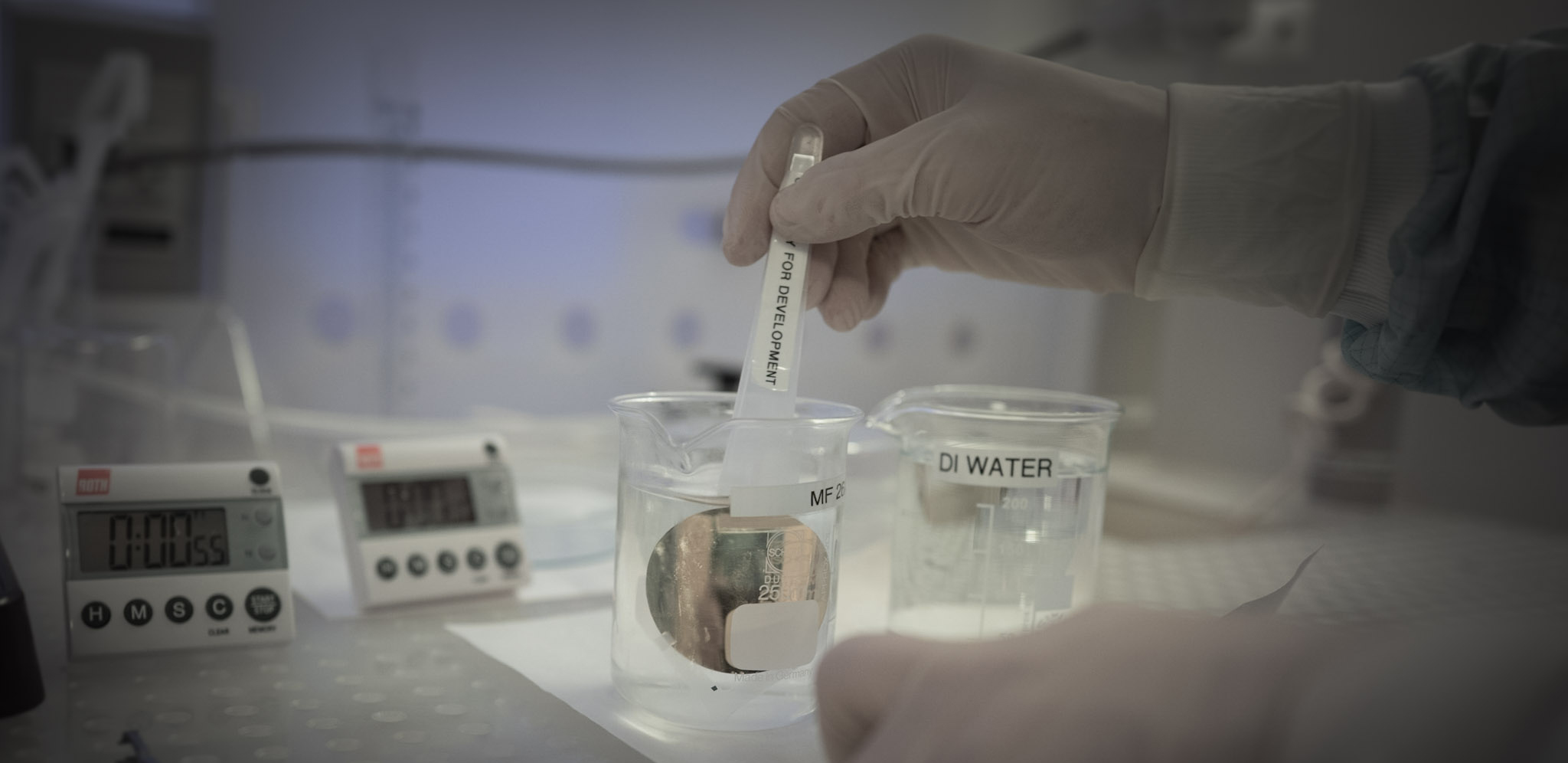Superconducting Devices
 |
At the core of the receivers in the IRAM observatories are superconducting devices that perform the actual detection of the millimeter waves. The IRAM Superconducting Devices group is in charge of the fabrication of these detectors. For this purpose, it operates a class-100 cleanroom equipped with state-of-the-art thin film deposition and optical and electron-beam lithography systems. Besides that, a small laboratory is used to test and characterize the different devices, and to investigate novel structures, technologies, and materials.
The main device that is produced is a so-called SIS junction. This is a sandwich of superconducting-insulator-superconducting material, made of alternatively niobium (a superconductor), aluminium oxide (an insulator), and again niobium thin films. Junctions produced by the Superconducting Devices group are used in the heterodyne receivers developed by the IRAM Frontend group and installed in the NOEMA antennas, the 30-meter telescope, but also certain receivers of ALMA and the Herschel Space Telescope. Within these receivers, the high-frequency signal from the telescopes is mixed down in the junctions to intermediate frequencies in the GHz range, and further amplified using more conventional electronics.
Besides SIS junctions, the group is also involved in the development of kinetic-inductance detector arrays. These detectors function by means of a superconducting resonator that changes its resonance frequency as a function of the illuminated power. Due to the GHz frequency readout, these detectors can easily be multiplexed into a camera for mm-wave radiation, such as the NIKA2 instrument on the 30-meter telescope. Currently, the group is studying different superconducting materials to create these detector arrays (e.g. aluminium, titanium nitride) and investigate their ultimate physical limits in terms of intrinsic noise and sensitivity.
Next to these two main pillars, the Superconducting Devices group hosts a number of smaller projects, involving micro-electromechanical systems, on-demand RF devices for the Frontend group, and planar silicon metamaterial lenses.

